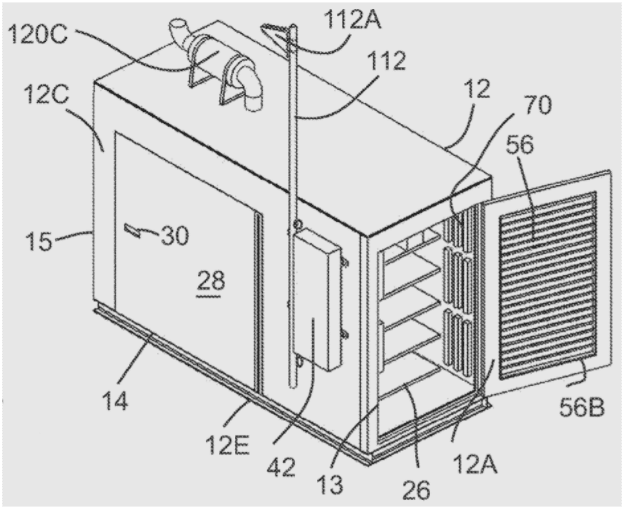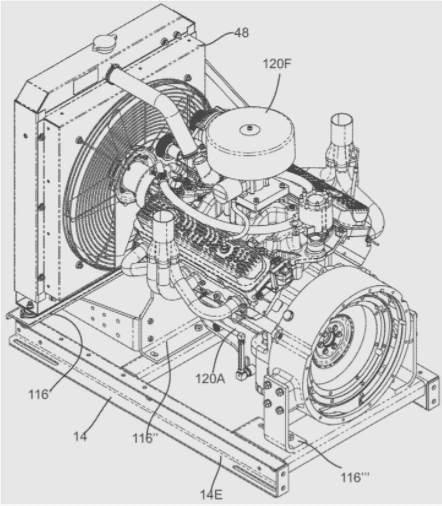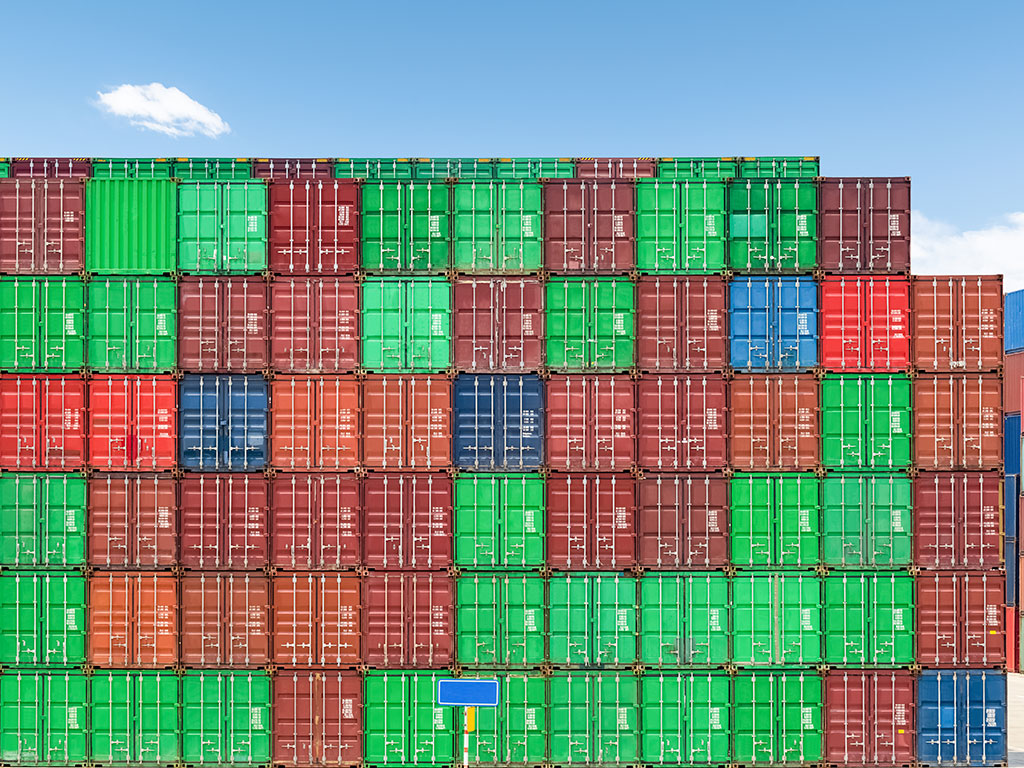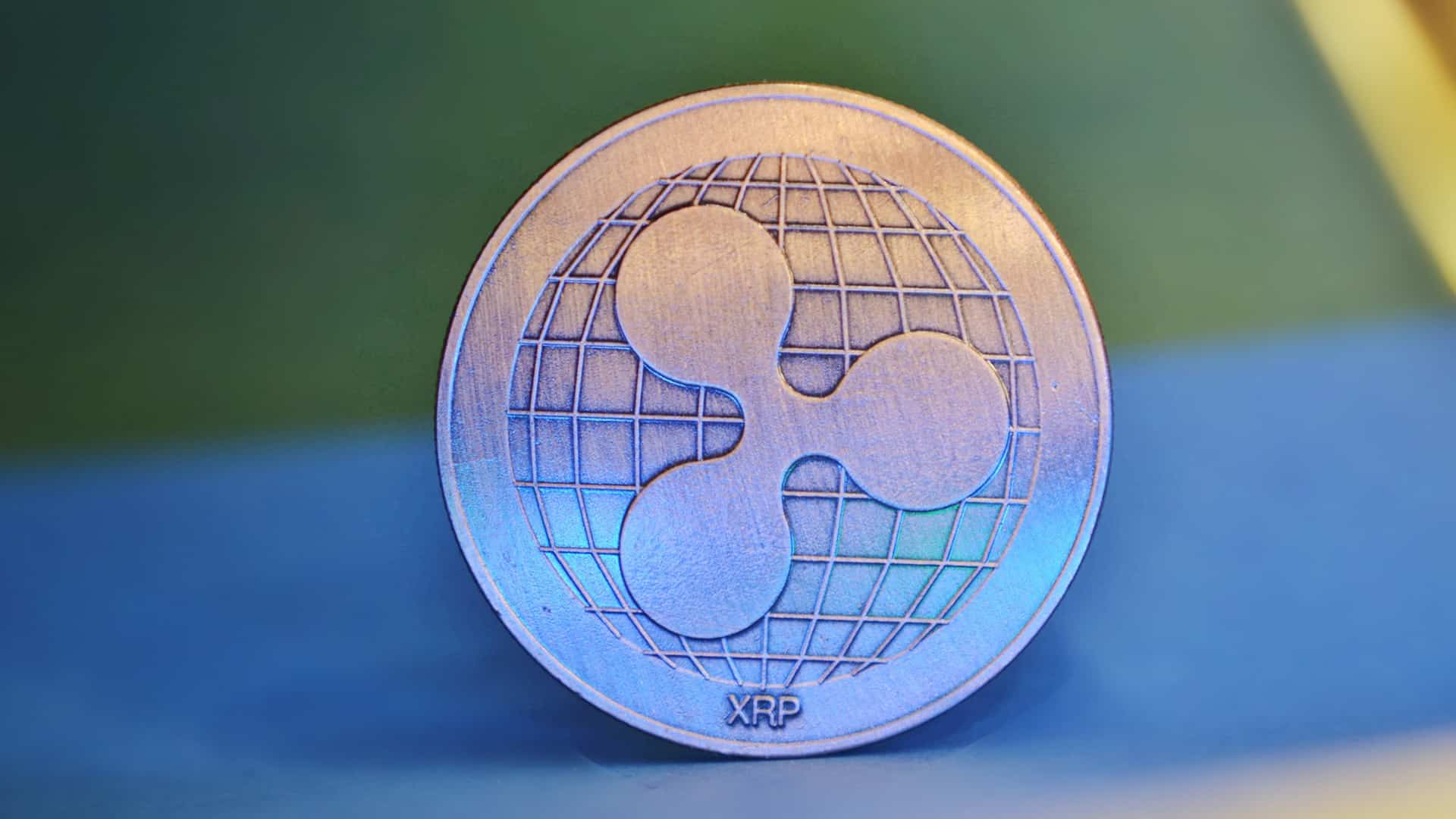A recently published USPTO filing covers designs for a portable cryptocurrency mining system. A moveable structure like a shipping container would house all the necessary equipment for mining, including a generator and an inlet for fuel.
Cryptocurrency mining is the process by which tokens for assets like Bitcoin and Ethereum enter circulation. Computers and math equations are synonymous to pickaxes and rocks respectively in mining digital tokens.
The patent applicant is from Canada-based Upstream Data, which specializes in Bitcoin mining data centers for oil and gas producers. The company’s pitch includes a way to derive value from power with nowhere to go—mining Bitcoin using electricity no one would buy.
Entities with access to oil and natural gas fields are the target audience for this setup since mining a single Bitcoin today requires 9 years’ worth of a household’s electricity consumption. Energy requirements for crypto mining have grown exponentially in the last decade, and cryptocurrency naysayers have used this to point out the digital money-making scheme’s unsustainability, both in terms of the environment and macroeconomics.
In September, all crypto transactions and mining operations were banned in China due to electricity shortage. China is where 46% of the world’s Bitcoin used to be mined, owing to cheap electricity. Regulators across the world say digital currencies run the risk of undermining governments’ control of financial and monetary systems, besides promoting illicit online activities.
A game of cat and mouse is afoot between cryptocurrency mining firms and the law, soon perhaps not just in China. With an uncertain regulatory future, portability becomes more important than ever before. To this end, Upstream Data suggests repurposing shipping containers into portable Bitcoin miners.

Fig. 1. A front perspective view of the blockchain mining system. It features a cellular antenna [112A], a heated exhaust outlet [120C], and an electrical panel [42]. Inside are power distribution units [70] and mounts [26] for blockchain mining processors.
The blockchain mining system comprises a portable building in the form of an intermodal transport container. Inside are blockchain mining processors mounted on a rack in vertical stacks. These machines “mine” cryptocurrency by solving a complex hashing puzzle. Operating several miners at a time grants the owner better chances of solving the puzzle first, and thereby being awarded digital tokens.

Fig. 2. A front perspective view of a skid-mounted engine and generator.
Powering the processors is a floor-mounted engine and generator combo that can be fueled by natural gas. Running the engine faster increases the generator’s output, which boosts the system’s processing power. The setup’s speed is dependent on the production rate of combustible gas at the container’s location, which Upstream Data says may be a hydrocarbon production well, storage, or processing facility.
Operating several computers, an engine, and a generator within a portable enclosure produces immense amounts of heat. Such is another challenge in large-scale cryptocurrency mining; a power plant recently came under fire for heating Seneca, the largest of the glacial Finger Lakes in upstate New York. The facility was being used to power at least 8,000 Bitcoin miners. Similar stories, from the smallest to the largest scale, have prompted cryptocurrency miners to look to novel applications for the heat, in the absence of better cooling solutions.
While Upstream Data’s patent application does not mention using its blockchain mining system to warm homes and greenhouses, the engine does have a coolant loop to keep temperatures under control. A large cooling fan would also channel air through the entire enclosure as a way to keep all the machines inside running optimally. This is important to preserving the longevity of every component, especially since miners are expected to operate for very long periods of time.
Upstream Data’s modified shipping containers could bridge the cryptocurrency industry with oil and gas firms. Regulations in China have left a massive void in the Bitcoin mining space, and it would only make sense that fuel providers pick up the slack in the power-hungry digital gold rush.
The featured patent application, “Portable Blockchain Mining Systems And Methods Of Use”, was filed with the USPTO on November 20, 2020 and published thereafter on September 23, 2021. The listed applicant is Upstream Data Inc. The listed inventor is Stephen Barbour.





